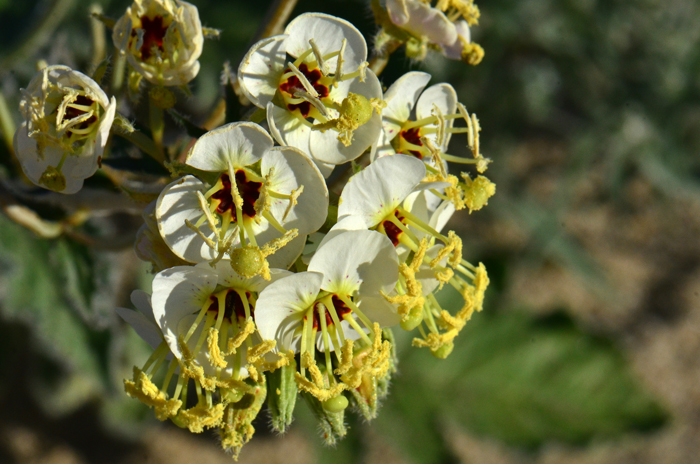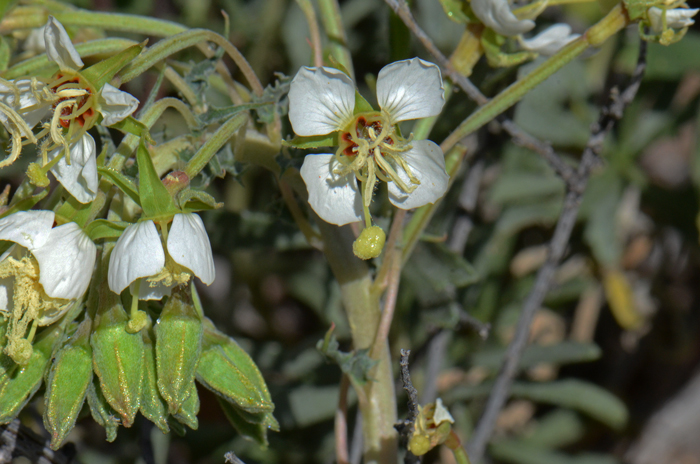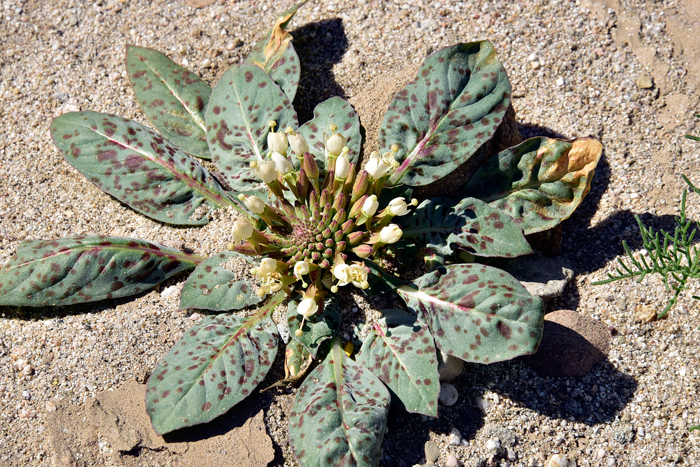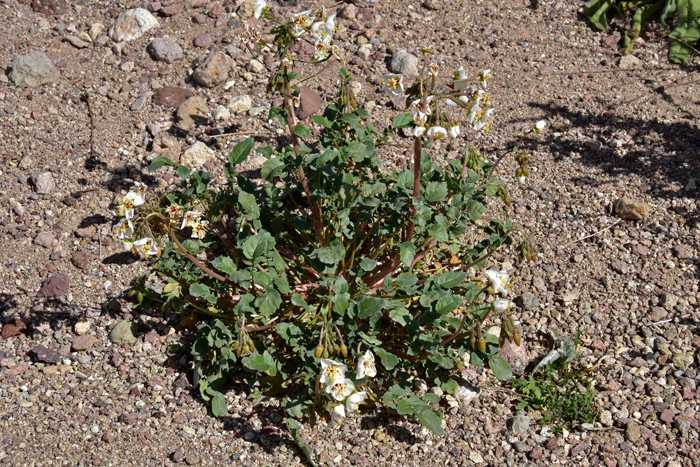Chylismia claviformis, Browneyes




Scientific Name: Chylismia claviformis
Common Name: Browneyes
Also Called: Brown-eyed Primrose, Clavatefruit Suncup
Family: Onagraceae, Evening Primrose Family
Synonyms: (Camissonia claviformis, Oenothera clavaeformis, Oenothera claviformis, Oenothera scapoidea var. claviformis, Chylismia scapoidea var. claviformis)
Status: Native
Duration: Annual
Size: Up to 24 inches or more, depending on location and sub-species, often much shorter.
Growth Form: Forb/herb;
Leaves: Green; mostly basal, shape lanceolate-cordate.
Flower Color: White or yellow, flowering stem nodding, flowers open at dusk, fruit ascending or spreading.
Flowering Season: February to April.
Elevation: Up to 4,500 but usually below 3,000 feet.
Habitat Preferences: Rocky slopes, washes and sandy places.
Recorded Range: In the southwest and far west in the United States in AZ, CA, ID, NV, NM, OR and UT. Also native to Baja California and northwest Mexico. In Arizona Chylismia claviformis is found in the west ½, central and south ½ parts of the state.
North America & US County Distribution Map for Chylismia claviformis as Camissonia claviformis.
U.S. Weed Information: No information available.
Invasive/Noxious Weed Information: No information available.
Wetland Indicator: No information available.
Threatened/Endangered Information: No information available.
Genus Information: In North America, the USDA, Natural Resources Conservation Service includes species of Chylismia under the genus Camissonia. The synonym Camissonia is found in the western half of North America. The Plant List includes 16 accepted species for Chylismia. All data is approximate and subject to taxonomic changes.
In the southwestern United States; Arizona has 22 species of Camassonia, California has 43 species, Nevada has 29 species, New Mexico has 6 species, Texas has 1 species and Utah has 19 species. All data is approximate and subject to taxonomic changes.
10 sub-species in Chylismia (=Camissonia) claviformis.
Comments: Members of Evening Primrose family have undergone several taxonomic changes. Browneyes was originally included in the type genus Oenothera, reclassified to Chylismia reclassified again to Camissonia, currently they have been placed back to the earlier genus Chylismia.
With 10 sub-species, Browneyes is extremely variable in form.
In Southwest Desert Flora also see Miniature Suncup, Camissonia micrantha, Yellow Cups, Chylismia (=Camissonia) brevipes California Suncup, Eulobus californicus and Palmer Evening Primrose, Tetrapteron (=Camissonia) palmeri.

